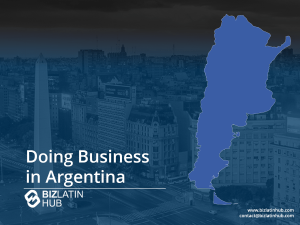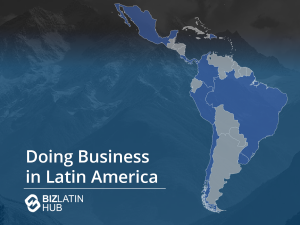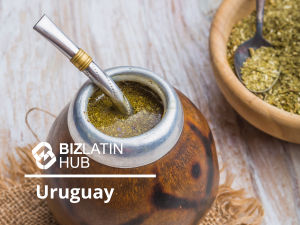The Peruvian economy is is just as diverse and colorful as its vast geographic spread and captivating culture. The country is one of the most stable economic powers in Latin America, with a GDP of US$225 billion in 2018. Much of Peru’s success can be attributed to increasing international trade alliances and export opportunities. Currently, commodity exports make up the most significant percentage of the country’s global economic activity. However, there’s another industry specific to Peru on the brink of mass exportation, foreign investments, and new businesses.
Recently, nutritionists and researchers found a handful of foods native to the country of Peru that fall within the ‘superfood’ category. Superfoods are those are that have low calories, high fiber, omega-3 fatty acids, phytochemicals, vitamins and minerals. With recent trends in countries around the world becoming increasingly more health conscious, the demand for these superfoods is on the rise.
Peru is one of the few countries in the world that has such extensive access to so many native ‘superfoods.’ With new discoveries being made in the more remote parts of the country, business and investment opportunities for native and foreign companies present themselves plentifully.
Peruvian Super Foods – Peru’s Agricultural Market

Currently, Peru has a relatively strong agriculture industry. Over the past 20 years, the industry experienced steady, promising growth, averaging an annual growth rate of 3.3%. As for economic impact, the industry makes up 11.3% of the nation’s GDP. This staggering growth is largely attributed to the tax cut and subsidies farmers in Peru receive from the government. Researchers and economists estimate that since the 1990s, Peruvian farmers have benefited from over US$6 billion in government subsidies in the industry.
The extensive benefits and special treatment the farmers receive is the first enticing piece to the investment puzzle that is Peruvian superfoods. When the market is subsidized and the government grants tax breaks, farmers and landowners use the excess money to expand upon the business. With expanding businesses and increasing global demand for Peruvian produce, foreign investors could be looking at a very worthwhile opportunity.
Recently, the most popular agriculture exports for Peru included coffee, potatoes, corn, cotton, sugar cane, wheat, and cocoa. Most frequently, the country is exporting these products to China, the United States, and Switzerland. Surely, Peru’s up-and-coming superfood industry will take these markets by storm.
Peru’s ‘super’ natural resources
Incredibly, Peru has a plethora of ‘superfood’ products that grow naturally all throughout the country. Historically, these healthy foods have been consumed and used as ingredients in many dishes from indigenous tribes. However, just recently are modernized nations recognizing the many health benefits these same foods offer. Some of the most promising superfoods to export and their health benefits are listed below.
Quinoa
Quinoa, already a widely popular side dish around the world, reigns from the Andes mountain range.

Health benefits of the superfood include perks like high levels of protein and contains all essential amino acids. Additionally, it is high in fiber and carbohydrates, high in antioxidants, and helps boost metabolism.
Peru happens to be the largest grower and exporter in the world of the super grain. The country produced 79,269 tonnes in 2016, or 53.3% of the total market production. Of this large sum, it exported 44,300 tonnes in 2016. Moreover, due to such high global demand, international selling prices for quinoa rose 500% between 2005 and 2014. As a result, Peruvian farmers experienced massive economic gains and further expanded upon their businesses.
Until recently, Peru’s neighbor, Bolivia, dominated exportation of quinoa. However, Peruvian farmers were able to surmount the numbers Bolivia was exporting by offering competitive bulk pricing tactics. Naturally, foreign markets gravitated towards the cheaper prices. These price cuts were made possible by the influx of government subsidies and an increase in foreign investment.
Golden berries
Golden berries, otherwise known as Inca berries, are another superfood from Peru. Just like quinoa, ancient tribes and communities grew and ate golden berries centuries ago. Now, the fruit is getting global attention for its high antioxidant levels.
Within Peru, the golden berry is produced in a variety of different regions. Most famous for their cultivation of the fruit are the regions of Ancash, La Libertad, Cajamarca, Lambayeque, Ayacucho, Lima, Junin, Huanuco, and Cusco.
Up until 2016, Peru had only been exporting the berry to European countries. Total, the European market generated US$1.8 million for Peruvian golden berry exporters. However, recently, Peru made efforts to start exporting the product to the United States, where the demand is growing. Currently, the US imports the majority of its golden berries from Colombia. However, with the right promotion and investment, Peru could capture the US golden berry market the same way they did the quinoa market: low bulk pricing strategies.
Camu Camu
Camu Camu, a fruit native to the section of the Amazon rainforest located in Peru, is an up-and-coming superfood in the global markets. The sour berry has a higher vitamin C content than oranges, supplying 750% of the daily recommended dosage per serving. Moreover, the cherry-colored fruit has high levels of other essential antioxidants, helps lower inflammation, improves blood sugar, and lowers high blood sugar levels.
Because the fruit is so tart and sour, it is not common for people to eat it as is. More often than not, the berry is processed into a powder to be added to water, protein shakes, or other healthy drinks. It is also common to find it in pulp, juice, and puree form.
Nowadays, Peru is the largest exporter of camu camu. Common export destinations include Japan, the US, Italy, and other European countries. Opportunities for business people and investors lie in the fact that cultivators and producers of camu camu and its derivatives plan to develop the national market more. The fruit is widely consumed in the regions where it is grown. However, outside of these sectors, it isn’t as popular. Before increasing global exportation, companies must first get other Peruvians onboard with the superfood. Experts in the field say the berries popularity potential is ‘undeniable.’

Acai berries

Hailing from the Amazonian region of the country, acai berries are one of the most popular superfoods worldwide. Originally, the berries were used by indigenous people for making juices. Now, many people consume the juice, as well as the berry and the seed itself. One advantage of acai berries is how diverse its uses are. It is very common for people to use them in drinks, smoothies, sorbets, desserts, and other snacks or breakfast accompaniments.
Not only are they delicious, but they also offer many health benefits. For one, they have loads of antioxidant chemicals, which help protect the body’s healthy cells from harmful ones. Moreover, they help protect against respiratory diseases and infections. Unlike most fruits, acai berries have a high healthy fat content and low sugar content. This makes it a practical and healthy option for your morning meal.
Purple corn
Another superfood unique to Peruvian land is purple corn. Purple corn has been grown in the Andes mountain range for thousands of years and was a staple food for many indigenous cultures. The unique color of this type of corn can only be found in Peru. The harsh environmental conditions of the Andes mountains forced the crop to genetically modify itself over time to be able to withstand and survive. This interesting fact gives Peru and its farmers are pretty much the only ones producing this crop currently.
Purple corn is one of the healthiest and most nutrient-rich vegetables out there. It is full of antioxidants, specifically anthocyanins. These nutrients are only found in fruits and vegetables with rich, dark pigments, like blueberries. However, the anthocyanin content of purple corn well-surpasses that of a serving of blueberries. Moreover, the purple vegetable supports healthy glucose levels, faster metabolism, and well-maintained cardiovascular health.
Cacao
Surely everyone’s favorite ‘superfood,’ cacao famously hails from the Amazonian forests in Peru as well. The cacao bean is notoriously used to make the highest quality and richest chocolate products. Named ‘theobroma cacao,’ meaning ‘food of the gods,’ was used by Incan civilizations nearly a thousand years ago. The bean itself and its derivatives were, and still are, used for a plethora of different products. Today, cacao is used to make chocolate, liquors, cocoa powders, and other sweet and bitter delights.
As for its health benefits, the cacao bean has 40 times the antioxidant content of a serving of blueberries. Moreover, it also happens to be the highest plant-based source of iron in the world. Finally, it has also been proven to naturally improve mood by encouraging serotonin production in the brain. Ultimately, this classifies the bean as a natural antidepressant. With all these benefits though does come with a catch. Many of these health benefits come with the assumption that one is consuming the cacao bean or it nibs directly, rather than processed versions of it. While processed versions of the cacao bean still have these seem attractive qualities, the quantities in which they come are lesser.
‘Super’ beauty market
Not only does Peru have superfoods that are extremely conducive to healthy eating, but also ones that are extremely beneficial as beauty regimens. This emerging niche market offers business people and investors a host of opportunities because it is not as well known as the superfood dietary craze. There are a handful of resources from Peruvian land that offer major skin and hair benefits and can be used to make organic, all-natural, cosmetic products.
The biggest trends in the cosmetic market surround plants like eucalyptus, acai, and even quinoa.
Eucalyptus

Eucalyptus, although not native to Peru, is found in abundance around the country. After government efforts to make land more visually appealing and hospitable, eucalyptus plants are commonly found in the Peruvian Andes.
The eucalyptus leaf is often used for its oil. Naturally, the plant’s oils contain healing powers conducive to treating cuts, blisters, bruises, and other ailments. Moreover, the plant can be used to ease sore muscles, as aromatherapy for those who suffer from headaches, and for alleviating coughs and colds.
Aside from a healing agent, the plant is often used to make lotions, soaps, candles, or just for its essential oil purposes. It serves as an efficient moisturizer for the skin and helps hair growth and scalp health as well.
Opportunities for business
The great thing about Peru’s seemingly endless access to natural ‘superfoods’ is that they have a competitive advantage in such a popular niche market. Investors and business people have a wide array of products and crops to choose from to cultivate and market. Moreover, as mentioned before, many of these superfoods possess serious benefits in more than just one industry. Businesses can find opportunities within the food industry, the beauty industry, or even both. At the end of the day, the only obstacle is the number of choices one has within the market. With so many different viable routes and options, choosing just one sector to get involved in becomes the biggest problem.
Opportunities abroad
The United States is one of the leaders in the ‘superfood craze.’ The country’s recent health-conscious trend sparked national interest in high amounts of exercise and resorting to highly sustainable and ‘super’ food choices. As of now, 30% of grocery shoppers in the US fall under this ‘health-conscious consumer’ label. As a result, grocers across the nation recognized a 24% increase in sales in products labeled ‘all natural’ and a 28% increase in sales for those labeled ‘organic.’
As a result, experts predict that the US will generate the greatest amount of revenue for ‘superfood’ producers. Globally, the market reached a valuation of US$161 million in 2018 and will reach US$250 million by the year 2025.
Foreign investors and business people looking to get involved in the market should recognize the potential that the US market holds. With the right partnerships with Peruvian superfood farmers, all parties could benefit from the high demand the US is presenting. Moreover, with national organic grocers like Whole Foods, Trader Joe’s, and Sprouts looking for these unique, authentic, foreign superfoods to fill their stores, there is sure to be no shortage of retailer demand for these Peruvian products.
Let us help
The Peruvian superfood and agriculture industries are incredibly fascinating, while also proving to be very lucrative. Opportunities across many different sectors and markets continue to present themselves every day. Working with local partners and experts will help facilitate and streamline the process.
Here at Biz Latin Hub, we pride ourselves on working to provide our clients with personalized, practical strategies and solutions. From market entry to back-office services, to commercial representation, our team can help you and your company fully penetrate Peru’s superfood industry. Contact us today to get started on this ‘super’ opportunity.





